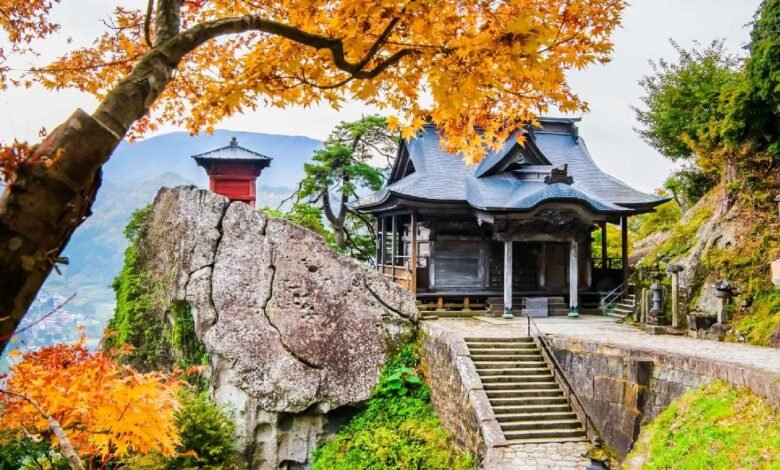Miiyazuko Bunkrr: Unveiling the Secrets of Japan’s Hidden Fortress

Introduction to Miiyazuko Bunkrr
The Miiyazuko Bunkrr, a clandestine structure nestled deep in the heart of Japan, represents a remarkable feat of engineering and strategic design. Constructed during the tumultuous years of World War II, this underground bunker was not just a military stronghold but also a sanctuary for pivotal wartime operations. Today, it stands as a testament to human resilience and architectural ingenuity, embodying the complexities of war and the lengths to which nations will go to protect their sovereignty. This article delves deep into the history, design, and modern significance of the Miiyazuko Bunkrr, offering readers an exhaustive examination of one of Japan’s most enigmatic historical sites.
Historical Significance of Miiyazuko Bunkrr
The origins of the Miiyazuko Bunkrr are deeply intertwined with Japan’s military strategies during World War II. As the threat of aerial bombings and invasions became more pronounced, Japan embarked on a nationwide effort to fortify its defenses, leading to the construction of numerous underground bunkers. The Miiyazuko Bunkrr was a major part of this defensive strategy, designed to serve as a secure command center from which operations could be coordinated far from the prying eyes and destructive capabilities of enemy forces. Situated strategically, this bunker facilitated the management of communications and logistics, playing a crucial role in Japan’s war efforts. Its construction was a feat of both engineering and secrecy, ensuring that it remained hidden from enemy reconnaissance throughout the war.
Architectural Design of Miiyazuko Bunkrr
The architectural brilliance of the Miiyazuko Bunkrr is evident in its ability to combine functionality with extreme fortification. Built to withstand significant bombardments, the bunker was constructed using reinforced concrete, with walls thick enough to repel any external threats. This design philosophy extended to every facet of the bunker, from its camouflaged entrances that blended seamlessly with the natural landscape to its intricate network of tunnels that connected various sectors of the bunker internally. The internal layout was meticulously planned to include command centers, living quarters, storage facilities, and emergency escape routes, ensuring that it could function autonomously during extended periods of siege.
Life Inside the Bunker
Living conditions inside the Miiyazuko Bunkrr during its operational years were marked by a strict regimen and adaptability to confined spaces. The bunker was equipped to house a significant number of military personnel and essential staff. Life underground was challenging, with limited access to natural light and fresh air, which was mitigated by advanced ventilation systems. Despite these hardships, the bunker was a microcosm of military efficiency and camaraderie, with every space and resource meticulously organized to maintain morale and operational readiness under stress.
Rediscovery and Preservation Efforts
Following Japan’s surrender in 1945, many such military installations were decommissioned and forgotten. The Miiyazuko Bunkrr lay dormant until its rediscovery in the 1970s, a period that saw a resurgence of interest in World War II relics. Recognizing its historical value, efforts were initiated to preserve the site as a monument to Japan’s wartime history. Preservationists and historians have since worked tirelessly to maintain the structural integrity of the bunker while making it accessible to the public for educational purposes. Today, it serves not only as a historical site but also as a poignant reminder of the past, with guided tours that offer insights into its construction, operation, and the life of its occupants.
Modern-Day Significance and Educational Opportunities
The significance of the Miiyazuko Bunkrr extends beyond its historical and architectural merits. It has become a vital educational tool that offers unique insights into wartime strategies, architectural resilience, and the human spirit. Educational programs focus on the technical aspects of its construction, the historical context of its operation, and the broader implications of such fortifications in modern military theory. Scholars, students, and history enthusiasts flock to the site, drawn by the opportunity to learn from a real-world example of war-time ingenuity and survival strategies.
Conclusion: The Legacy of Miiyazuko Bunkrr
The Miiyazuko Bunkrr is more than just a relic of a bygone era; it stands as a symbol of human determination and architectural prowess. As it continues to educate and inspire, this bunker reminds us of the resilience and ingenuity required to navigate the complexities of war. For those interested in military history, architecture, or simply the remarkable stories of survival and adaptation, a visit to the Miiya zuko Bunkrr offers a unique and profound glimpse into a pivotal moment in history. As this article shows, the bunker is not just a place but a narrative of endurance, a testament to the spirit that can teach us much about both the past and the future.
